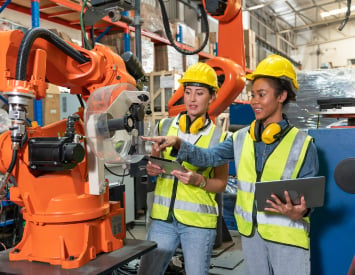Have you ever wondered what it would be like to communicate meaningfully with animals? Imagine not just listening to them, but having a meaningful conversation in a language both humans and animals comprehend.
This vision is on the brink of becoming reality with the aid of artificial intelligence (AI).
There are ongoing studies with researchers all over the world centred around decoding whale codas to understand what they are saying to humans and each other.
Researchers have made notable strides in understanding animal communication through studies on dolphins, primates, birds, elephants, and cetaceans (whales and dolphins).
Researchers have identified individual signature whistles in dolphins and decoded complex social interactions facilitated by these vocalizations. Similarly, studies on primates have revealed their intricate communication through calls or shouts and social signals or gestures.
Ornithologists have deciphered the meanings of bird songs, including mating calls and territorial warnings, contributing to our understanding of avian social behaviors.
Research on elephants has uncovered the use of infrasound and rumbles for long-distance communication and coordination within herds.
Building on these studies, researchers have now turned their focus to whales. From an engineering standpoint, the AI technology being utilized here piques our interest even more. So, let’ get into it!
Whales vs AI
Advancements in AI technology have reached a point where the possibility of communicating with animals is becoming a reality. In the world of biology, researchers employ innovative techniques known as playbacks to unravel the mysteries of animal communication triggers—key to understanding their behaviors and social dynamics.
These experiments, such as those involving the distinct “whup” calls of humpback whales, serve as crucial tools for understanding what prompts animals to vocalize and how they respond to various stimuli.
However, conducting these playbacks comes with its challenges. Animals, like humpback whales, are remarkably attuned to the voices they hear. If a whale recognizes the caller in the playback as familiar, it might alter its response, complicating efforts to conduct neutral experiments. Biologists, therefore, face the daunting task of ensuring that their playbacks remain unbiased and objective.
To overcome these challenges, biologists have turned to cutting-edge technology.
One such initiative involves biologist Fournet, who collaborates with Earth Species, a group of technologists and engineers pioneering the use of AI in understanding animal communication.
Together, they are working to develop synthetic humpback whale calls using AI algorithms.
Earth Species envisions a future where AI plays a pivotal role in decoding and translating the intricate languages of various species across the animal kingdom. Their mission extends beyond mere academic curiosity; it holds profound implications for conservation efforts in a world where wildlife populations are rapidly dwindling.
By understanding and effectively communicating with animals, conservationists believe they can better protect and preserve endangered species.
The integration of AI into the study of animal communication represents a paradigm shift.

Earth Species founders believe that AI has the potential to revolutionize our understanding by decoding not just verbal communication but also gestures and movements that convey meaning among animals.
This approach promises to address fundamental challenges in animal behavior research, such as the “cocktail party problem” where scientists struggle to decipher overlapping voices in animal choruses.
Practically, AI tools developed by Earth Species are already showing promise in real-world applications. They have been instrumental in identifying signature whistles among dolphins, which could potentially serve as early warning signals for mass strandings.
By detecting increased stress levels through changes in dolphin vocalizations, these AI systems could alert conservationists to intervene and redirect dolphins away from perilous shorelines.
Looking ahead, Earth Species aims to expand its AI capabilities beyond decoding to include generating animal calls. This advancement could lead to rudimentary conversations between humans and animals, facilitating unprecedented insights into the minds and behaviors of non-human species.
The Impact on Engineering
The integration of AI into decoding animal communication presents significant opportunities for engineering, particularly within industrial automation and systems design.
By leveraging AI to interpret complex patterns in animal vocalizations, engineers can develop sophisticated automation systems for wildlife monitoring and environmental management. For instance, advanced AI algorithms could drive the creation of automated sensors and monitoring systems that continuously analyze and respond to environmental changes, ensuring real-time adjustments to protect wildlife habitats.
Furthermore, these AI-driven tools could be integrated into broader industrial systems, such as automated drones or robotic platforms, enhancing their capability to collect and analyze ecological data efficiently.
This technological synergy not only advances our scientific understanding but also paves the way for engineering innovations that make conservation efforts more effective and responsive.
In essence, AI’s role in decoding animal communication underscores its potential to revolutionize industrial automation, providing engineers with new tools to address complex environmental challenges.
References
The way whales communicate is closer to human language than we realized
The 30 Most Intelligent Animals in the World Might Surprise You


